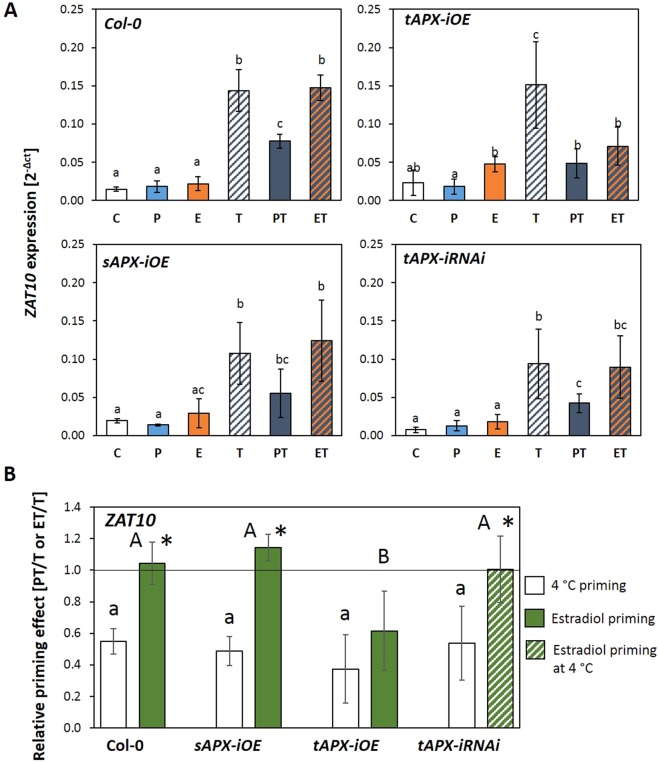Figure 4.
The effect of cold or deregulation of plastidic ascorbate peroxidases on a subsequent cold trigger. (A) ZAT10 transcript levels in control plants (C), only cold-primed (P), only estradiol treated (E), only cold triggered (T) and cold-primed and cold-triggered (PT) and estradiol-treated and cold-triggered (ET) Col-0, sAPX-iOE, tAPX-iOE and tAPX-iRNAi plants of the same age. The tAPX-iRNAi ET plants were cold primed and sprayed with estradiol. The letters refer to distinct significance groups as determined by ANOVA (Tukey’s test, p < 0.05, n = 4 ± SD). (B) Priming effect. ZAT10 transcript abundance in cold (white) or by estradiol spraying (green) primed Col-0, sAPX-iOE and tAPX-iOE and tAPX-iRNAi lines after 24 h cold triggering (PT and ET, respectively) normalized on the transcript abundance in triggered only plants (T-plants). The tAPX-iRNAi plants were cold-primed and sprayed with estradiol (green-white striped). The crude data are identical to those in section A. for calculation of the means, standard deviations and the statistical analysis (one-sided t-Test p < 0.05; n = 4) the PT/T- and ET/T-ratios, respectively, were calculated independently for each biological replicate first. Different small letters show significance of difference in cold primability, different capital letters difference in the cold response after estradiol spraying. The asterisks label significantly different results between cold- and estradiol-priming.

